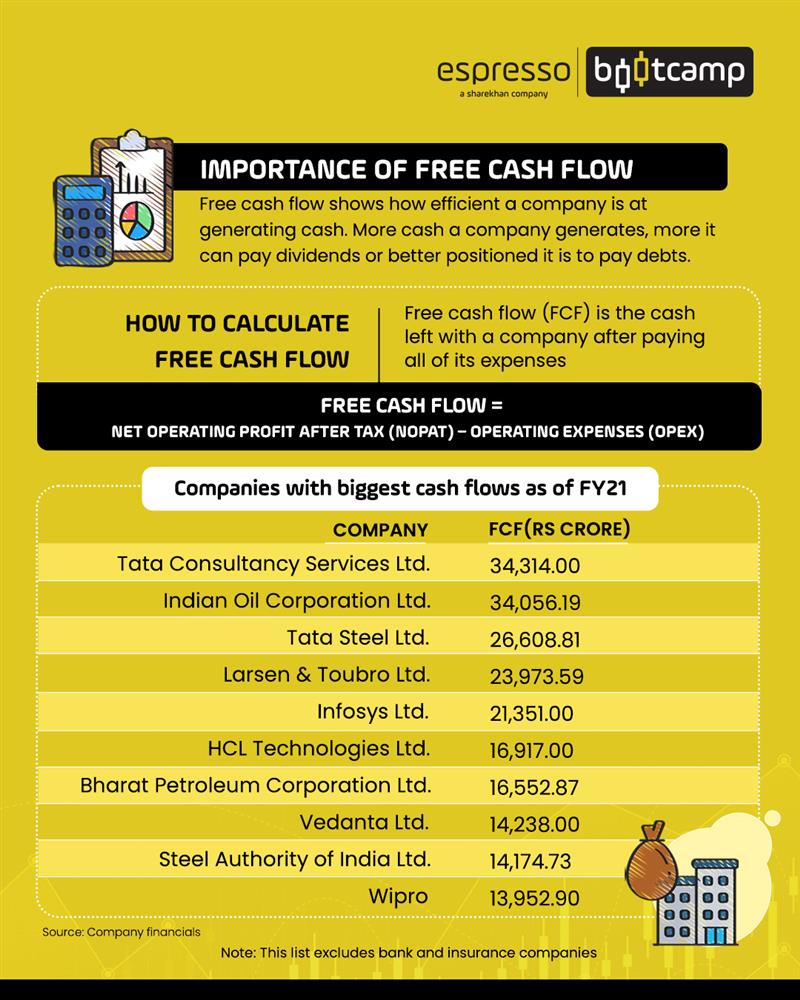 What is a cash flow statement and why do we need a cash flow statement when there is a balance sheet and a Profit and Loss statement? This is a common question most people ask. Let’s put this into context.
What is a cash flow statement and why do we need a cash flow statement when there is a balance sheet and a Profit and Loss statement? This is a common question most people ask. Let’s put this into context.
A balance sheet shows the company’s cash and bank balance as on a particular date, while a Profit and Loss Statement shows how much profit was earned or loss incurred during a given period.
Both these financial statements fail to show how much cash flow was generated during the stipulated period from business, financial and investment activities. That's when a cash flow statement comes into the picture as it indicates how much cash flow has been generated by the company.
Let’s look at a few scenarios to understand the cash flow statement better:
A coconut vendor sells 500 coconuts on a given day for Rs 50 each. He will earn a total revenue of Rs 25,000 at the end of the day. If each coconut cost him Rs 40, he would have earned a profit of Rs 5,000. Now, after he paid back the cost of the coconuts, Rs 20000, to the person he bought them from, he would be left with Rs 5,000 in hand. In other words, his P&L and cash flow statements will show Rs 5,000 as net profit and cash surplus for that day.
On that very day, an electronic shop owner sells 10 laptops for Rs 25,000 each on credit. Each laptop cost him Rs 20,000. At the end of the day, the shop owner would have netted a sale of Rs 2,50,000 and a net profit of Rs 50,000. However, his cash flow statement would reveal a cash surplus of nil as he had sold the laptops on credit.
These simple examples show that profit doesn’t necessarily mean generating cash flow. Therefore, depending on only one source of data may often be misleading.
Understanding the cash flow statement
Cash flow is the net amount of cash, and its equivalents, flowing into and going out of a company. A cash flow statement details cash inflow and outflow from operations, investments or financing activities during a given period.
A company can receive cash by:
- Selling products/providing services
- Borrowing loans
- Raising capital
- Selling assets
- Making investments
Similarly, a company will have to pay cash for the following:
- Meeting operating expenses
- Repaying loans and interest
- Purchasing assets
- Making investments
A cash flow statement is divided into three activities:
- Operating
- Investing
- Financing
This is the cash flow statement of Godrej Industries for the year ending March 31, 2021, which shows positive operating cash flows, but negative overall cash flow due to investment outflows.
Analysing a cash flow statement
An analysis of the cash flow statement is basically an observation of cash flow over several years. Here are some pointers for analysing cash flow statements before making investment decisions.
- A company should have steadily increasing cash flows (from operating activities) over the years for its stock to be investment-worthy. It is wise to stay away from companies with uneven cash flows.
- Ideally, a company’s cash flow from operating activities should exceed its net income. This indicates a positive cash flow, which means inflows exceed outflows. However, positive cash flow does not necessarily mean the company is profitable. Take the case of several start-ups that have negative operating cash flows that are made good by fresh capital infusion or borrowings, i.e., cash flow from financing activities.
- Positive profits and negative cash flow, or not-so-positive cash flows, may mean that the company is spending more on non-P&L account items.
- On the other hand, companies with negative cash flows cannot be ignored and may present good investment opportunities, especially when the negative cash flow is due to some exceptional events such as a voluntary retirement scheme or factory shutdown. Also, if the trend over the years shows a decreasing tendency in negative cash flows, such companies are also worth looking at. On a similar note, decreasing positive cash flow over the years is also a warning signal about the company and calls for a deeper analysis of its operations.
- Increased and sustained investment cash outflow indicates that the company does not have suitable investment avenues and is currently parking the funds in interest-bearing or dividend-yielding investments. However, such sustained investments over a long period may also indicate that the company may be looking at distributing this cash surplus among shareholders through dividends or share buyback. Increased investments in the company’s subsidiaries call for a detailed study of the financial statements of such subsidiaries.
- There are various cash flow ratios that can help assess the trends in the cash flows of a company. We will learn all about these ratios in chapter 11 of this module.
Points to remember
- Analysing cash flow statements is a clear indicator of a company’s financial standing.
- Profits and cash flows will be at odds in growing economies like India as growth-oriented companies invest in new assets.
- Cash flow statement is most important for investors, promoters, management as well as traders.
 0
|
0
|
 0
0
 Modules
Modules

 Watch
Watch 
